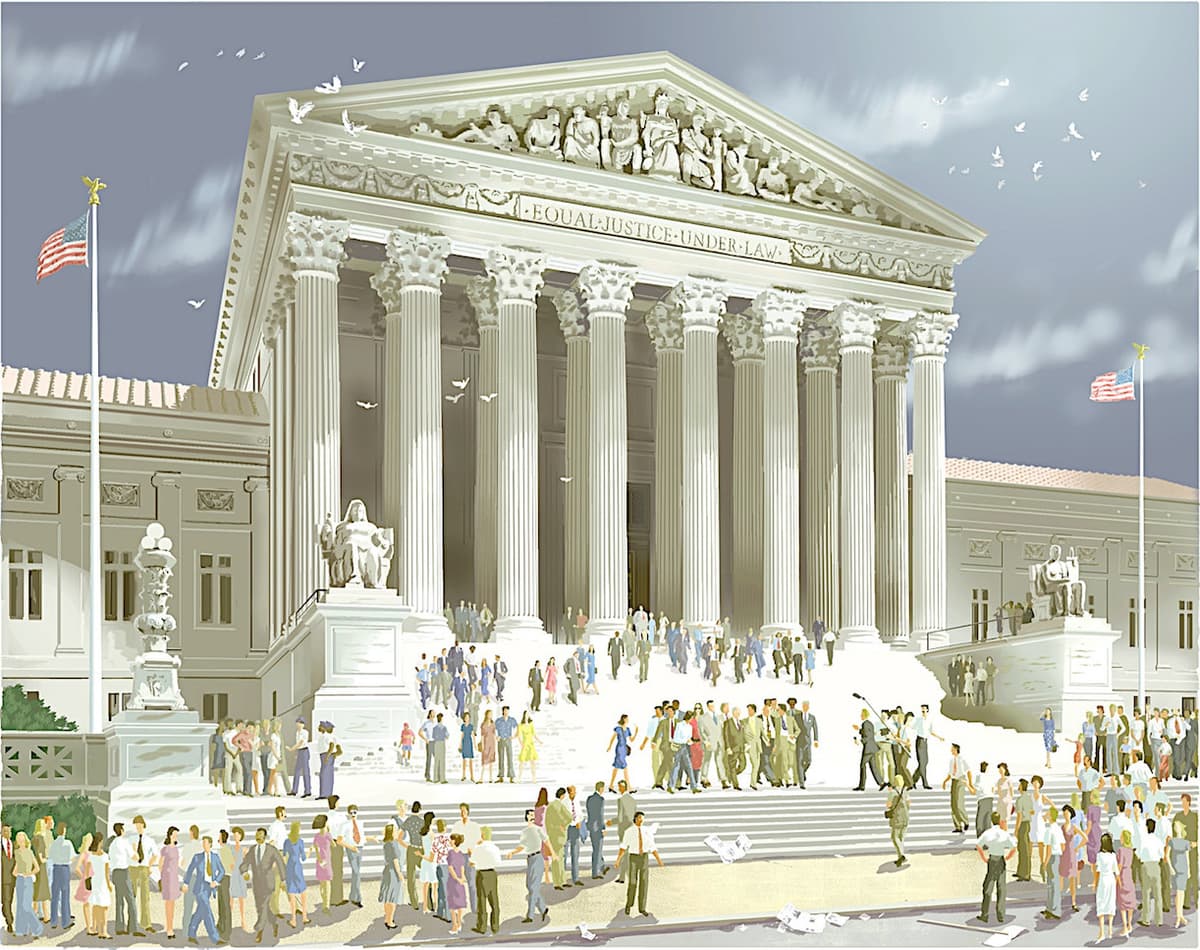The Civil Rights Court
With a six-justice majority, the court is well on its way to vindicating the promises of core articles of the Bill of Rights. It’s rare for a generation to learn the meaning of the First, Second, and Fifth Amendments anew.

As the Supreme Court has turned to the Bill of Rights in the closing days of its term, we find ourselves thinking of the great hymns of civil rights. For the latest decisions make the Nine start to look like a civil rights court. With a six-justice majority, the court is well on its way to vindicating the promises of core articles of the Bill of Rights. It’s rare for a generation to learn the meaning of the First, Second, and Fifth Amendments anew.
The first breakthrough is in Carson v. Makin, which holds that a tuition assistance program that subsidizes secular private schools “can’t discriminate against religious private schools.” In enforcing such a law, Maine was guilty of “discrimination against religion.” The state’s attorney general, Aaron Frey, reacted by calling on state leaders to “ensure that public money is not used to promote discrimination, intolerance, and bigotry.”
When it comes to sentiments such as these, we recall FDR’s peroration in his speech at the old Madison Square Garden: “They are unanimous in their hate for me — and I welcome their hatred.” Such displays of animus are what tipped the scales in Masterpiece Cakeshop v. Colorado, which we discuss in a forthcoming editorial. In the fastnesses of rural Maine, religious liberty is vouchsafed.
No less than the First Amendment, the Second is a bulwark, what St. George Tucker in 1803 called “the true palladium of liberty” because by it all the rest is secured. In New York State Rifle & Pistol Association v. Bruen, a majority helmed by Justice Clarence Thomas struck down New York State’s concealed carry law that required law-abiding citizens to show “proper cause” to carry a firearm outside the home.
“We know of no other constitutional right that an individual may exercise only after demonstrating to government officers some special need,” Justice Thomas declared. There is no caste system for constitutional protections, and rather than whim and whimsy “the government must demonstrate that the regulation is consistent with this nation’s historical tradition of firearm regulation.” We elaborate on this in an adjacent editorial.
Governor Hochul promptly labeled the high court’s decision “reprehensible” and promised that her state is “prepared to go back to muskets” when it comes to regulating guns. That was a reference to Justice Thomas’ suggestion that “reliance on history to inform the meaning of constitutional text — especially text meant to codify a pre-existing right—is, in our view, more legitimate, and more administrable” than deferring to bureaucrats.
In Vega v. Tekoh, the court made efforts toward clearly spotlighting the core of the Fifth Amendment’s prohibition against compelled self-incrimination. Writing of the famous script the court propounded in Miranda v. Arizona, Justice Samuel Alito noted “those rules, to be sure, are ‘constitutionally based,’ but they are prophylactic rules nonetheless.” As such, they are an insufficient basis for federal monetary claims.
Miranda was decided by the Warren Court, which was discovering the Constitution’s shadows, penumbras, and implied rights, as the text of the Constitution became a means to progressive dreams. After a half century, that trend has now come to an end. Blocking the schoolhouse doors is a maneuver known to all those afraid of what is on the far side of the threshold. This is a moment to remember that America did overcome.

